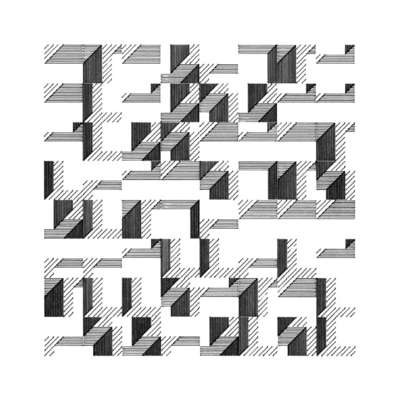The RAM compositions are examples of Zajec’s first work done on an IBM 1620 Houston Instruments Complot computer, and printer with a DP-I plotter.
Programmed in FORTRAN IV and produced at Carleton College. Northfield. MN
Linear elements are distributed on a rectangular lattice in different spatial and rhythmic combinations according to varying probabilities of occurrence.
“The basic reason which made me turn to the computer was the need for a new medium. Coming from the field of painting and traditional graphics, I initially approached the problem from a purely aesthetic point of view and tried to develop the concepts which I had hitherto worked with. My concepts were based upon the assumption that art can be the universal aspect of reality, and I was therefore most interested in the works and ideas of Piet Mondrian and Kazimir Malevich…
My compositions consist in various arrangements of a given number of units in a square format, which is limited in size by the plotter on which the work is executed. […]
With the use of the Random Number Generator subroutine (RAM), the computer arranges the units randomly itself.”
[Edward Zajec in: tendencije4, exhib.cat., Galerija suvremene umjetnosti, Zagreb, 1970, n. p.l]
Source: [Rosen, 2011] and http://www.dam.org/exhibitions/plotter-drawings-from-1960s








